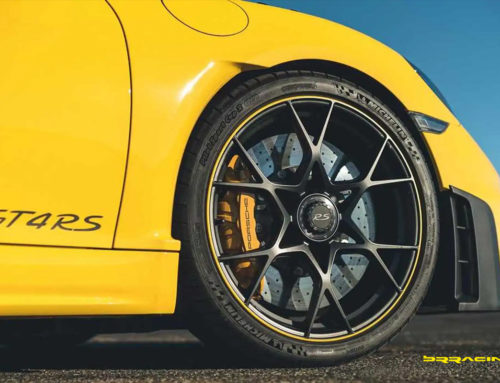Maybe not COIL SPRING breakthrough, but a SPRING breakthrough.
Hyperco (a US based company, makers of Hypercoil coil springs) may have found the breakthrough. They have been producing composite leaf springs for some years now. Not only are the carbon springs lighter than steel, but they retain their set indefinitely, while steel sags over time. The carbon leaf springs have found use in Corvettes and Late Model Stock Cars. However, most race cars run coil springs, and they are a very different proposition to manufacture in carbon and retain the principal characteristics. After much testing and research, Hyperco realized that a simple substitution of material in the same construction was not the answer.
It quickly became apparent that a carbon fiber helical compression spring would not work because helical compression springs operate primarily by a torsional twisting action, and carbon fiber has very little strength in torsion. To make carbon fiber work, you need to change the spring action, but not the result. The solution was a well known technology, just not deployed in this manner. The solution was a series stack of “Belleville” washers. Belleville washers or springs operate under the same mathematical rate computations as a series of helical compression springs. Each spring is a molded carbon composite washer with a slightly bevelled profile. To create the spring, the washers are stacked in alternate or inverted manner to give a bellows design. In a series stack of springs, the combined rate is always lower than the rate of the lowest rate spring. For example, a 20 washer stack of 10,000lb/in Beleeveille washers will have an assembled rate of 500lb/in. Total deflection of the stack is the deflection of one washer times the number of washers in the stack. You can also alter the combination of how the washers are stacked, thereby achieving a parallel or series orientation, allowing the spring rate to be finely tuned.
But, there is another problem or challenge that arises when you have beveled washers in a stack.? Something still has to deflect, and absorb or provide the spring action.? The problem that arises is that the washers slide in a horizontal orientation as they compress and expand, they slide over each other and the friction causes hysteresis (hysteresis = The lagging of an effect behind its cause).? In a spring, linearity is key, as a spring that changes in its force or reaction in a non-linear and non-predictable manner is no good.? So, Hyperco examined this issue, and designed the shape of the washers so that the friction or interaction between the washers would have more of a roller bearing type result….which in turn means the compression and expansion could deliver linear results.
There is another benefit of this design, and the ability to control the shape of these washers.? One of the drawbacks of conventional springs is the interaction or friction between the spring and the shock shaft.? This causes a load on the shock shaft, and changes the desired behavior of the shock.? With the washers, they could design a stacking orientation and clearance that would keep the washers from ever interfering with the shock shaft.
Like any new breakthrough, and when one firm has the upper hand, the downside is cost.?? Cost is not out of line, but is consistent with titanium springs, which most of the leading race teams have been using to both reduce weight as well as gain the linearity in performance.
BRracing – we carry and provide H&R, Eibach, Swift and Hypercoil sport and race springs.






Thanks for all the detailed information here. I really appreciate the efforts you have put in your www. Its very effective and informative www. Thanks for sharing your information.
After checking out a handful of the www posts on your web
site, I truly appreciate your way of writing a www. I saved as
a favorite it to my bookmark webpage list and will be checking back soon. Please check out my website as well and
tell me your opinion.
sport
Coil Spring Breakthrough?